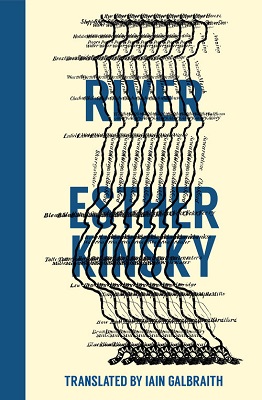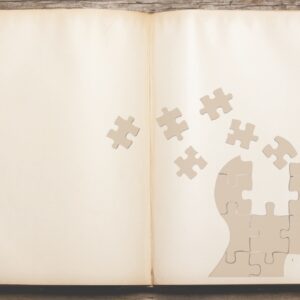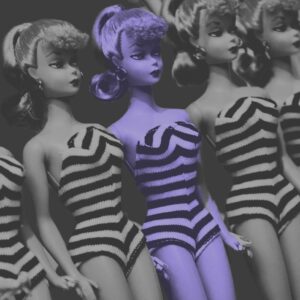3. Rhine
What were my memories of rivers, now that I lived on an island whose thoughts were turned seawards, where rivers looked shallow and pretty, noticeable only when they frayed into flats, or cut deep channels as they flowed out to sea? Sometimes I dreamed of rivers I had known, rivers that cleaved their way through plains and towns, rivers kept at bay by flood defences, or which rippled through the bright countryside. I remembered ferries and bridges and endless searching in unfamiliar terrain for ways to cross a foreign river. I spent my childhood by a river that appeared to me in dreams when I ran a fever.
The river of my childhood was the Rhine. The chugging of barges echoed from the gentle wooded and wine-growing slopes at the northern edge of the Siebengebirge. In a west wind the trains on the opposite bank sounded so close that the tracks could have passed through our garden, and the air smelled salty and fishy as if the sea were not far away. From the garret window you looked west; trams, barely visible through the pale standing corn in summer, passed along the bottom of a field; behind that came the factories, then the poplars along the riverbank. And in the blue beyond, a range of low hills was visible under the horizon across the river. That was where the sun set in winter.
The river rearranged the landscape by night: darkness was a hollow body where the sounds of the world were different from those of day. The barges resounded from the hills behind the small town; the dry gasping sough of a gravel chute, barely perceptible by day, hung in the sky. I lay awake in bed and the river felt nearer and larger than before, challenging daylight rules, and under the dome of the night sky I could never be sure what world I would wake to the following morning.
As children we often went down to the river. We stood on the breakwaters, and the bow waves of barges almost washed over our feet. We waved as they glided past, their decks full of flapping washing, bicycles and barking dogs, and sometimes there would be somebody waving back from that restless, transient land between two riverbanks. We learned how to skim flat stones, watching them skip several times across the surface. Our fingertips remembered the feel of different kinds of pebbles, the rounded edges of river-washed shards of glass, shiny clumps of fool’s gold which, always on the lookout for something precious, we would carry home. We stood on the stony shore with Grandfather, who taught us to tell the time by the church-tower clock-face on the opposite bank. We got to know the two species of inland gulls that hung about the jetties and ferry piers, screeching as if by the sea. My grandfather could foretell the weather by the smell of the river.
The river meant dislocation, confusion and unpredictability in a world that craved order. On its back it bore a travelling, unimaginable life-form in the shape of barges we never saw at anchor, plying up and down between far-flung places. Barges with black coal, dull-red basalt, light-grey grit—moving hillocks rolling by. The yearly floods washed away any sense of order. The water rose slowly, sloshing over the breakwaters, sand-rooted willows, footpaths, and climbed the railway embankment. It clawed at things that seemed fixed and inviolable: benches, trees, little pavilions in places where the riverside was levelled, grassed and looked after. For every object it took, the river deposited something else it had torn away further upstream: unfamiliar filth, dark matter for which we had no name. When the water fell, it left behind a strip of foul-smelling devastation which, depending on the height of the flood, could stretch up the embankment to the tracks themselves.
“I remembered ferries and bridges and endless searching in unfamiliar terrain for ways to cross a foreign river. I spent my childhood by a river that appeared to me in dreams when I ran a fever.”
The trains on our side of the Rhine were mostly freight. The tracks ran along raised embankments parallel to the riverside footpath and divided the town from the world of the river. Life in the small towns and villages went round and round in circles, at each turn straightening up, smoothing out, obliterating ever more of whatever had been there before our childhood: wasteland, the faded names of businesses on house fronts, debris and empty spaces, the back-yard world of lopsided and lean-to sheds converted into lawns bounded by thuya hedges. The last remaining domain of disorder was an unsettling factory site with burnt smells, chalk and stone dust, and murky barracks for foreign workers on a piece of sodden grass between factory and railway embankment. The hinterland was connected to the river-world by damp, mouldy-smelling subways; there were always pools of water in the middle of these paths; we bet on who was going to have the loudest echo when we screamed, and held our hands over our ears whenever a train thundered over our heads. Nettles grew along the riverside and emitted a sour acidic fragrance during rainy summers; the slopes of the rail embankment were out of bounds, and the smell of nettles in the summer rain suggested something illicit to me ever after. Rubbish amassed between the stones and willows along the riverbank, and sometimes dead fish would wash up for days on end; we were forbidden to touch them, even with the toes of our shoes. Breakwaters pushed into the river from the reinforced banks. Willow growth, small sandy bays and pebble banks lay below the footpath. Bulky flotsam, left hanging in the willow branches by receding floods, stayed where it was till it fell apart; rusty frames, their original function impossible to guess at, stuck out of the shallow water by the bank. But what distinguished this untidy strip of land from the towns was not merely its disarray and the fortuity of found objects, it was also the motion of the river itself, its one-way flow towards a north that always seemed brighter, where the land levelled to a plain and there was not a hill to be seen, only the silhouettes of larger buildings against the white background of the sky. The barges gliding downstream towards this brighter patch of sky had an easy job, while those struggling against the flow looked heavier, blacker and uncertain as they pushed their way towards darker parts of the country. Upstream, where the valley abruptly narrowed, and the river still seemed to have no inkling of the sea, stood some blackish-brown stumps, a colour reminiscent of charred rock: the remains of a bridge that once had straddled this bridgeless section of the river, where only ferries now ran. The ruined pillars were a memory of war, a word that weighed heavily on our childhood. I wanted nothing to do with them, and kept my hands in front of my eyes whenever I thought the stumps were near, only removing them when my father called “now.”
My father was very attached to the river, and would travel by ferry whenever the opportunity arose. He knew all the ferrymen, and while we children huddled in the lee of the bulwarks, he liked to stand in the wind beside them, his hands in his pockets like them, talking about the weather. One of the ferrymen had artificial hands of dark brown leather because a grenade had torn both his hands off in the war. We stared at his leather hands, knowing it was bad manners, and our skin crawled, not just because of his creepy hands, but because we had stared despite its being against the rules. When the ferry put out, the second ferryman, who was responsible for tying and untying the mooring lines, holding a thick hawser in one hand, took a mighty leap across the ever-widening gap of black water between quay and ferry. The ramp thudded into place, and we hung onto the railing, giddy with gazing into the boiling water below, at passing boats, or the pitching landscape. Reaching the middle of the river the ferry turned, a troublemaker for barges plying up and down; we saw the Siebengebirge to the south, first one bank then the other, the sky in the bright north, lost our bearings, forgot where we were going, and were surprised by the loud bang as the ramp went down, and by finding ourselves on the other side, as if in a foreign land.
“The water rose slowly, sloshing over the breakwaters, sand-rooted willows, footpaths, and climbed the railway embankment. It clawed at things that seemed fixed and inviolable: benches, trees, little pavilions in places where the riverside was levelled, grassed and looked after. For every object it took, the river deposited something else it had torn away further upstream: unfamiliar filth, dark matter for which we had no name”
In autumn there were days of fog that called the truth of everyday experience into question. The rules of direction were cancelled, upstream and downstream ceased to exist, there was no this side facing that side. The opposite bank had disappeared, no ferries crossed, the barges’ foghorns sounded muffled while the boats gliding past were barely more than shadows; or else nothing was visible at all, and nothing in this thick, whitish grey moved, only the waves, small and shy, rolling over pebbles, resounding as if in an enclosed space, a cloud chamber perhaps, in which, unbeknownst to those standing on the riverbank, some experiment had been set up—the unveiling of a new world. Were the fog now to lift onto a different landscape, the scene behind the curtain would have shifted to reveal the sea in a subtle, rarefied light, where usually, prior to the fall of the curtain, the town’s first high-rise buildings had stood.
Back at home Grandmother sat at the sewing machine singing the song of the prince and princess who could not meet because the water was too deep. Their love, as celebrated in the song, ended badly. In fact my grandmother didn’t hail from the Rhine at all; she had grown up beside a different, smaller river of icy swirls and eddies, which, so she told us, nonetheless flowed with a sweetness eclipsing all the Rhine had to offer through a land of placid water meadows and friendly towns. It was only when the snow thawed and the ice broke up that the gentle river became a raging torrent, and to prove it she would sometimes open a red, linen-bound album containing nothing but photographs of a river in full spate—the so-called hundred-year flood. Over pages of punched-out prints with serrated edges we were able to view various stages of a bridge’s collapse under the pressure of water and ice. First we saw walls of snow by the roadsides, ice on the river, a snow-bound countryside, then ice floes—yellowed with age on the glossy paper—collecting against the bridge pillars, water foaming, ever wilder, higher in every picture, reaching the parapet of the bridge and washing into gardens along the riverside slopes, small figures balancing bales of hay and sacks on their heads between last patches of snow and mud-dark, then the pillars buckling, the bridge caving in, folding into the river, stumps sticking out of the water, part of the balustrade lying at an angle to a tree on the riverbank. This image of the devastated crossing between the two banks, this glaring wildness of a river that my grandmother, with a girlishness befitting of her world of ballads and fairy-tales, had walked or cycled over daily, became a regular feature of my bad dreams.
In primary school we had to learn sayings about Father Rhine, none of which had anything to do with the river I had walked along in the years before starting school. These sayings left an unpleasant aftertaste, which became much bitterer one day when the bow wave of a huge barge dragged a child in my class off the end of a breakwater. The Rhine had revealed Himself to be a nasty character. For days it seemed the river had taken our tongue and weighed so heavily in our clothes we could barely move. Rumours circulated, there was whispering and gossip of bloated corpses and little white coffins, until several days later the child’s body was discovered in riverside scrub some distance downstream.
The Rhine was the first border I ever knew, and it was constantly present. It taught us what was here and what was there. ‘Our’ side, with its villagey ways in relentless decline, its factories, shacks and freight trains, stood opposite the other side where the sun set. That side, remote and blurry, a hazy land of melting shapes and washed colours, provided a background to many of our family photographs. My father never tired of taking pictures of us children, whether by the river or on a ferry, sometimes with the wind ruffling our hair, sometimes standing in sparse snow before a riverside tree, behind us a black jetty, seagulls in the sky. Before our time, photographs taken by the river had sealed and attested certain festive occasions; behind the starched newlyweds—with or without parents, bridesmaids and best men—black barges or white pleasure steamers slid through the picture. One sepia portrait shows a pair of dark-suited brothers with black hats and walking sticks, their arms thrown around each other’s shoulders in a conciliatory gesture for the group photo; they are standing directly in front of the river on an uneven shore of Rhine gravel. Who, after funeral or wedding, would have asked them to stand there? In all likelihood the travelling photographer, of whom my grandfather spoke with admiration, and to whom, in his anecdotes, and in contrast to the various other dodgy characters who filled his stories—travelling salesmen from foreign parts, fairground hands, spoon-hawkers, tinkers and scissors grinders he gave no name. He was simply the photographer, wandering from one place to the next along the river, his camera and tripod on a little pushcart. People sent for him when a wedding was due, and hoped he would be there when funerals occurred. If they were lucky and he was there in time, he would photograph the deceased straight away, all laid out in his white shirt before being lifted to his coffin. A picture of one such ancestor, evidently lifeless in the slanting light while his relatives, headless dark figures—praying? weeping? staring? hoping for a picture of themselves while still alive?—thronged together in the background, was inserted loosely between the pages of an album. The photo remained unmounted and, oddly, would frequently change places; one never knew where it would turn up next. Suddenly there it would be, between two pages, half obscuring a different picture; it always sent a cold shiver down our spines, as if it were something forbidden. I would picture the photographer against the landscape of my childhood: the astonishing spectacle he must have presented as half of him disappeared under the black cloth he had spread over his camera in order to work wonders that would survive the people he had photographed; the way he would direct his instrument equally dispassionately at corpses and at the living, at funeral goers and at revelling wedding guests, providing souvenirs to people he did not know, while he himself would find it increasingly difficult to prevent the repetitive details of strangers’ lives from invading his own memories, which perhaps were solely of the river.
Pitted against the fickle autonomy of the river was a sparer landscape of orderliness and seeming legibility, which, as a child, I tried to get the hang of but could not understand. This consisted of names and numbers reminiscent of royalty—Roswitha, Monika and Michael I, II and III—on pitching boats and ferries moored at precarious jetties, also timetables and route maps, signs with variously interpretable symbols rammed into riverbeds along navigable channels, pennants and flags at the sterns of barges and ferries, combinations of numbers and letters on the sides of boats that could mean anything or nothing, huge kilometre markers, black on whitewashed surfaces, or white on black rock-faces, purporting to measure the length of flowing water and establish an order of things which in reality everything eluded. Trying to learn and use these numbers and symbols was a game that was over as soon as I started to search for a meaningful connection between the words and signs. Unable to find the story that linked them, I tired of looking and turned my back on the Rhine.
A few years later, I would spend the better part of school days hanging about on my own by the river, cycling back and forth along the bank, sitting for hours on embankments that were reinforced with black, tar-covered boulders, searching for the same letters and symbols: names of ships, kilometre markers, registration numbers of barges. I was only interested now in what was going downstream towards the brightness where you would eventually come to the sea. For a while I kept a little notebook where I jotted down everything I could decipher on the barges passing downstream, as if, given time, I would be able to find a pattern. What I later remembered were columns of symbols divided into weekly blocks, which, on the squared paper, looked like the verses of a poem: ciphers of movement, of an elsewhere.
__________________________________
From River. Used with permission of Transit Books. Copyright © 2018 by Esther Kinsky. English translation copyright © 2018 by Iain Galbraith.













